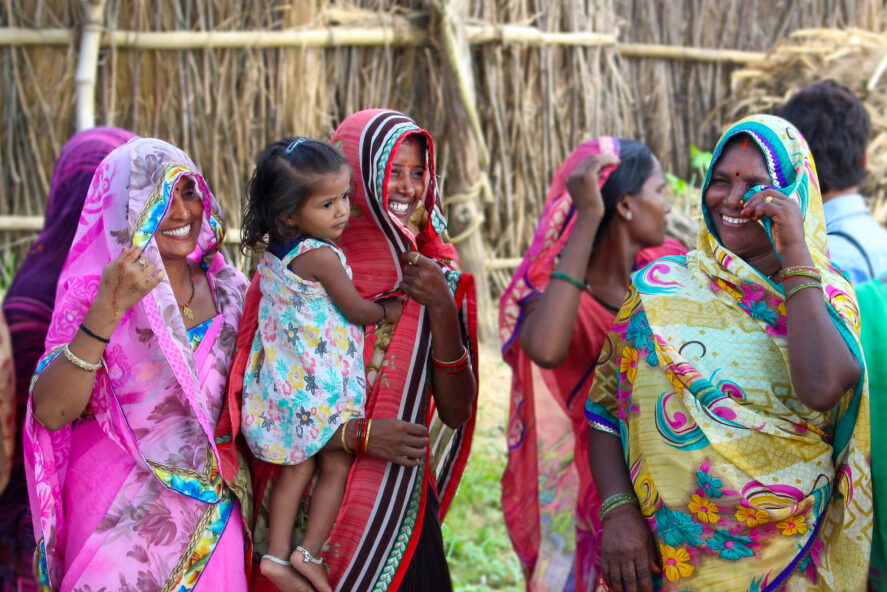Empowerment Programs Can Improve Nutrition of Women Left Behind by India’s Urban Transformation

New research from the Tata-Cornell Institute for Agriculture and Nutrition (TCI) reveals that Indian efforts to improve household nutrition through women’s empowerment could have a greater impact with a more targeted approach that takes into account different levels of urbanization.
Published in the journal Food Policy, the TCI study assesses the effect of women’s nutritional empowerment on dietary diversity within households situated in areas along a continuum from rural to urban. The study shows that empowerment can improve women’s nutrition even among lower-income households that miss out on the benefits of urbanization, such as access to markets.
Based on their results, TCI researchers said that policymakers should focus their efforts to improve women’s empowerment on India’s most impoverished populations while continuing to promote urban development. In more urbanized regions of the country, they recommended that policies should aim to ensure access to affordable, healthy foods by investing in markets and supply chains.
“Under the right conditions, women’s empowerment is a powerful tool for improving nutritional outcomes,” TCI research economist Soumya Gupta said. “Our research shows that empowerment programs will be most effective when they are targeted at impoverished populations that do not benefit from the food system infrastructure and higher incomes brought about by urbanization.”
To arrive at their conclusions, the researchers used “couples” data from the fourth round of India’s National Family Health Survey (NFHS) to calculate dietary diversity scores for men and women from more than 60,000 households. Dietary diversity is commonly used by researchers as a proxy for overall nutrition. They also used the NFHS data to calculate empowerment scores using the Women’s Empowerment in Nutrition Index, which measures women’s capacity to eat well and be healthy.
“Our research shows that empowerment programs will be most effective when they are targeted at impoverished populations that do not benefit from the food system infrastructure and higher incomes brought about by urbanization.”
To measure the degree of urbanization surrounding each household, researchers used satellite data on nighttime light, where the greater amount of light corresponds to greater levels of urbanization. This allowed them to place households along a sliding scale of urbanization, rather than simply labeling each as rural or urban.
The researchers found a significant link between overall urbanization and dietary diversity. As urbanization levels doubled, the dietary diversity scores of both women and men increased by 7-8%. Women’s empowerment was found to rise along with urbanization, and empowerment was associated with greater dietary diversity for women, though not for men. For every unit increase in the empowerment index, women’s dietary diversity improved by 0.19 food groups.
The researchers discovered that urbanization becomes more important than empowerment at higher income levels. Urbanization brings along with it many changes that can improve nutrition outcomes, namely better access to markets and stronger supply chains, of which higher-income households can take advantage.
“The role that women’s empowerment plays in improving nutrition might be subsumed by the benefits of urbanization, such as income,” Gupta explained. “Alternatively, empowerment levels might already be high in urbanized areas.”
However, urbanization does not improve nutrition outcomes among lower-income households, whereas empowerment has a significant impact. TCI researchers said that this suggests that some components of empowerment operate independently of urbanization and can likely overcome economic constraints that stem from low levels of urbanization. For example, women’s ability to make household purchasing decisions and influence family planning methods can affect food consumption within even impoverished households.
The NFHS data used by the researchers shows much room for improvement in both nutrition and women’s empowerment in India. Dietary diversity is low for both men and women across the country but is significantly lower for women. Compared to men, women on average consume about half or less of each food group. Nationally, women are nutritionally disempowered, with an average empowerment score of 34%. In no state does women’s empowerment rise above 50%.
“The data is clear that there is a need to improve nutrition outcomes in India and that women’s empowerment can be leveraged to do so,” Gupta said. “In impoverished small towns and rural areas, boosting women’s empowerment is likely to be effective at influencing diets, but as regions develop and urbanize, policies should aim to ensure access to affordable, healthy foods.”
Featured image: A group of smiling women at a community meeting. (Photo by Kathryn Merckel/TCI)





